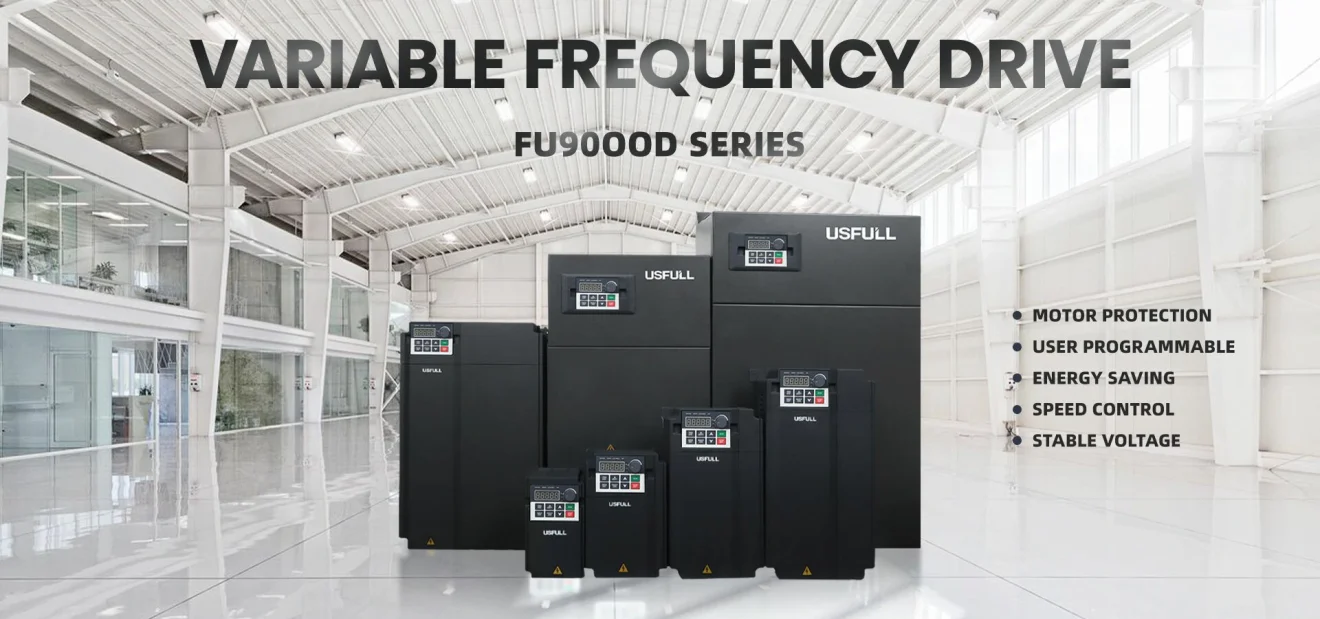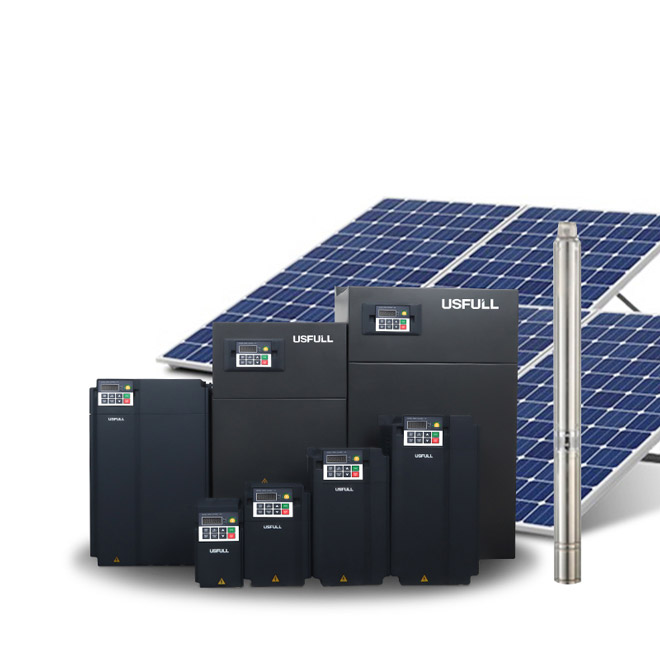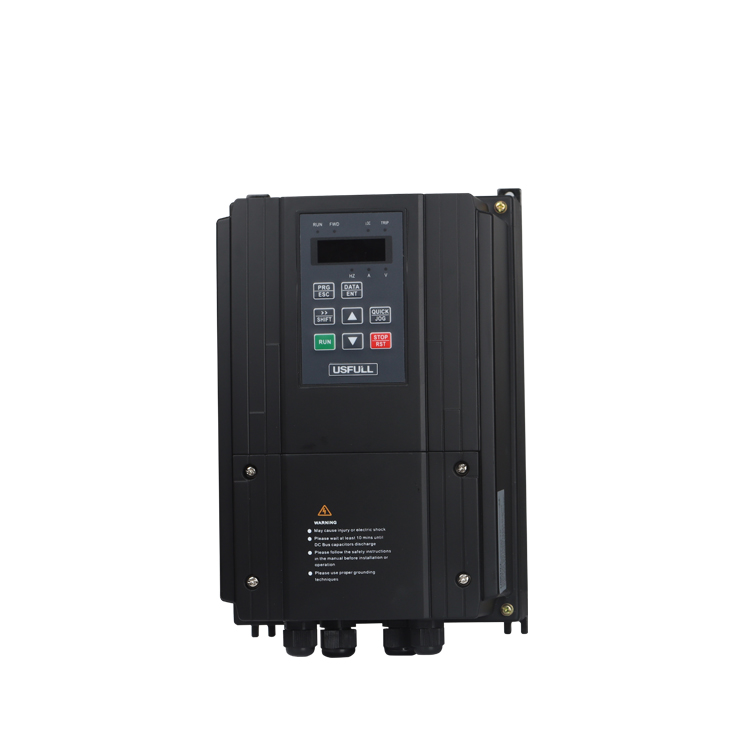Frequency converters comprise a multitude of configurable parameters, each offering a distinct range of options. During operational use, instances may arise where improper configuration of individual parameters results in the frequency converter’s suboptimal performance. Consequently, it becomes imperative to accurately establish the relevant parameters. Herein, the following parameters are delineated in comprehensive detail:
There are many setting parameters of the frequency converter, and each parameter has a certain range of choices. During use, it is often encountered that the frequency converter cannot work normally due to improper setting of individual parameters. Therefore, it is necessary to set the relevant parameters correctly.

1. Control method:
That is, speed control, torque control, Proportional-Integral-Derivative (PID) control or other methods. After adopting the control method, it is generally necessary to carry out static or dynamic identification according to the control accuracy.
2. Minimum operating frequency:
The minimum speed at which the motor runs. When the motor runs at a low speed, its heat dissipation performance is very poor. If the motor runs at a low speed for a long time, it will cause the motor to burn out. And at low speed, the current in the wire will also increase, which will also cause the wire to heat up.
3. Maximum operating frequency:
The maximum frequency of general frequency converter is 60Hz, and some even reach 400 Hz. High frequency will make the motor run at high speed. For ordinary motors, the bearings cannot run at super-rated speed for a long time. Whether the rotor of the motor can withstand such a centrifugal force.
4. Carrier frequency:
The higher the carrier frequency is set, the greater the high-order harmonic component, which is closely related to the length of the cable, the heating of the motor, the heating of the cable, and the heating of the inverter.
5. Motor parameters:
The frequency converter sets the power, current, voltage, speed, and maximum frequency of the motor in the parameters, and these parameters can be directly obtained from the motor specification sheet.
6. Frequency hopping:
Resonance can potentially occur at specific frequency points, particularly in instances where the equipment possesses a relatively high profile. When overseeing the operation of a compressor, it is crucial to steer clear of the compressor’s surge point.
7. Acceleration and deceleration time
The acceleration time encompasses the duration required for the output frequency to ascend from 0 to the maximum frequency, while the deceleration time represents the interval for the output frequency to decrease from the maximum frequency to 0. Typically, the determination of acceleration and deceleration times hinges on the modulation of the frequency setting signal’s rise and fall. During motor acceleration, it is imperative to restrict the frequency setting’s increment rate to prevent overcurrent, whereas during motor deceleration, constraining the frequency setting’s decrement rate is essential to forestall overvoltage.
To establish the acceleration time, it is imperative to restrict the acceleration current to levels beneath the frequency converter’s over-current capacity, thus averting overcurrent stalling and inadvertent inverter tripping. In terms of deceleration time configuration, the primary goal is to prevent disruption of the smoothing circuit, thereby circumventing frequency converter disturbances.
While mathematical calculations could yield the acceleration and deceleration times based on the load, practical debugging often involves initially setting extended acceleration and deceleration times, factoring in both load characteristics and empirical knowledge. This iterative process entails observing potential alarms triggered by over-current or over-voltage during motor start-up and shutdown, followed by progressively reducing the acceleration and deceleration times. Guided by the principle of operational alarm absence, this iterative procedure is performed multiple times to ascertain the optimal acceleration and deceleration times.
8. Torque boost
Termed as torque compensation, this technique involves augmenting the low frequency range f/V to offset the torque reduction at low speeds attributed to motor stator winding resistance. When configured in automatic mode, voltage elevation during acceleration occurs automatically, thereby mitigating starting torque reduction and facilitating seamless motor acceleration. In instances of manual compensation, a more refined curve can be achieved through empirical experimentation, particularly focusing on load characteristics and initial load response.
In situations involving variable torque loads, inadequate selection can result in excessive output voltage at low speeds, leading to unwarranted energy wastage.
9. Electronic thermal overload protection
This feature is designated to safeguard the motor from overheating. It leverages the frequency converter’s CPU to calculate motor temperature rise based on operating current and frequency, subsequently enacting protective measures against overheating. It is worth noting that this function exclusively applies to scenarios characterized as “one driving one motor.” However, in situations involving “one motor driving multiple motors,” the installation of a thermal relay for each motor becomes imperative.
The computation for electronic thermal protection setting value is as follows:
Electronic thermal protection setting value (%) = [Motor rated current (A) / frequency converter rated output current (A)] × 100%.
10. Frequency limitation
This pertains to the prescribed upper and lower thresholds of the frequency converter’s output frequency. The frequency limitation serves as a protective mechanism, preempting the output frequency from reaching excessively high or low levels due to erroneous operations or external frequency setting signal source malfunctions. This safeguard is instrumental in averting potential equipment damage. Its configuration should be tailored to align with the unique context of the application. Furthermore, this function doubles as a speed regulator.
For instance, consider its utility in scenarios like certain belt conveyors, where material volumes are limited. To curtail machine and belt wear, employing a frequency converter is prudent. By establishing an upper limit frequency within the converter, the belt conveyor’s operation can be calibrated to a steady, reduced pace.
11. Bias frequency
Referred to interchangeably as deviation frequency or frequency deviation setting, this parameter serves a distinct purpose when the frequency is established through an external analog signal (voltage or current). It enables fine-tuning of the output frequency when the frequency setting signal reaches its minimal point. In select inverter models, when the frequency setting signal is at 0%, the deviation value can be applied within the range of 0 ~ fmax. Certain specialized inverters, such as Meidensha and Sanken, offer the added capability of setting bias polarity.
For instance, during debugging phases, when the frequency setting signal reads 0%, the frequency converter’s output frequency may not be precisely 0Hz but rather xHz. By configuring the bias frequency to a negative value of xHz, the frequency converter’s output frequency can be effectively calibrated to 0Hz.
12. Frequency setting signal gain
This functionality remains operative solely when external analog signals determine the frequency. Its primary role is to mitigate disparities between the external setting signal voltage and the frequency converter’s internal voltage (+10V). Concurrently, it streamlines the process of selecting the analog setting signal voltage. During configuration, when the analog input signal attains its maximum value (e.g., 10V, 5V, or 20mA), identification of the frequency percentage that aligns with the f/V graph output is pivotal. This percentage is then set as a parameter.
In scenarios where the external setting signal ranges between 0 ~ 5V and the frequency converter output frequency spans 0 ~ 50Hz, a gain signal of precisely 200% is set. This calibration guarantees optimal alignment between the external analog signal and the inverter’s internal voltage, ensuring precise frequency control.
13. Torque limit
This parameter encompasses two distinct modes: driving torque limitation and braking torque limitation. It operates on the basis of the frequency converter’s output voltage and current values, with the CPU calculating torque. This computation significantly enhances impact load recovery characteristics during acceleration, deceleration, and steady-speed operations. The torque limit function facilitates automated acceleration and deceleration control. Assuming that acceleration and deceleration times are shorter than the load inertia time, it ensures that the motor automatically accelerates and decelerates in accordance with the configured torque setting.
The driving torque function generates robust starting torque, and during steady-state operation, it governs motor slip, capping motor torque at the preset maximum value. Even if load torque experiences abrupt escalation, a brief acceleration time won’t induce inverter tripping. Moreover, with excessively short acceleration times, motor torque won’t surpass the designated maximum value. Enhanced driving torque proves advantageous for initiating operations, thus configuring it within the range of 80-100% is recommended.
In the context of braking torque, a lower value translates to heightened braking force, catering to swift acceleration and deceleration. Yet, excessive braking torque values can trigger an overvoltage alarm. Setting braking torque to 0% curtails regeneration added to the main capacitor, allowing motor deceleration without necessitating a braking resistor and circumventing tripping. However, on certain loads, a deceleration-related idling phenomenon can arise if braking torque is set to 0%. This may lead to repetitive frequency converter startups, causing significant current fluctuations. Vigilance is essential to prevent severe cases of inverter tripping in such scenarios.


